Dry Tortugas National Park
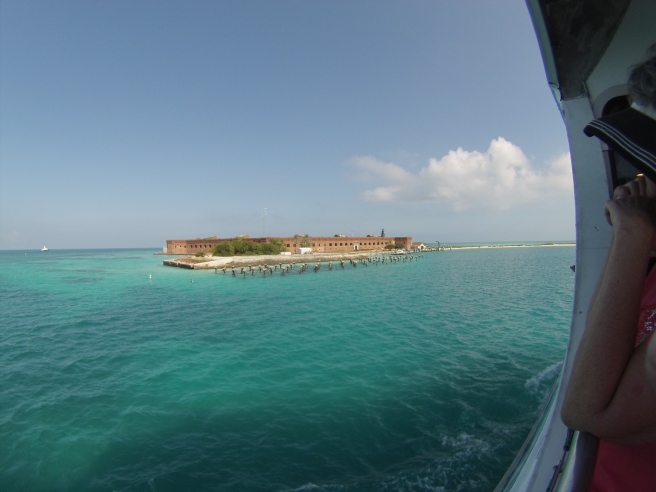
Robbed of sleep by pure excitement, I struggled to make out the time through the glow of my iPhone’s lock screen. A familiar restlessness from such nights spent listening to a swell building in the darkness knowing you will be out for a surf at first light. Or nights spent in the mountains peeking out the window at the closest street light to see how hard it’s snowing, hoping for fresh tracks in mornings new blanket of powder.
3:46 AM and only a couple more hours until departure for the Dry Trotugas National Park. The Dry Tortugas are the southern-most national park in the United States located on a small group of islands seventy miles below Key West. I had read about them early on in my research for our trip while looking for a campground in the Florida Keys. It was a place I knew we should visit. Further confirmed by half a dozen seasonal campers in our campground who let us know it was a must when visiting the lower keys or Key West. In fact every person I asked about the Dry Tortugas said the same thing, “You gotta go”.
Weather had been consistently windy and rainy. With ten days left in the Keys I was hoping for a break in the weather for the trip. Using all the weather forecast tools at my disposal I chose the best looking day out of the next two weeks and made reservations aboard the ferry. The Yankee Freedom III is a one hundred ten foot, high speed, all aluminum catamaran. With a two hundred fifty passenger capacity, indoor/ outdoor seating, she offers a comfortable ride.
We lucked out as smooth turquoise seas and soft winds laid before us pulling out of Key West.
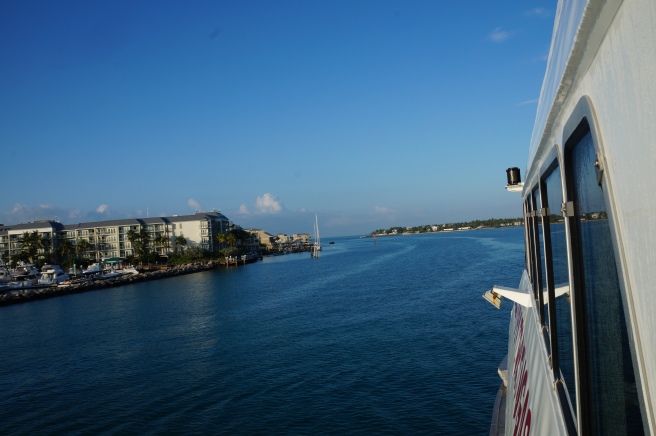
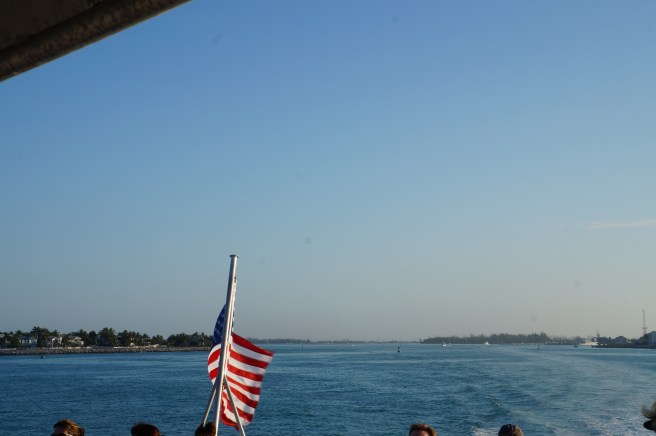
The Catamaran cut through the crystal clear waters offering a smooth ride in the early morning.
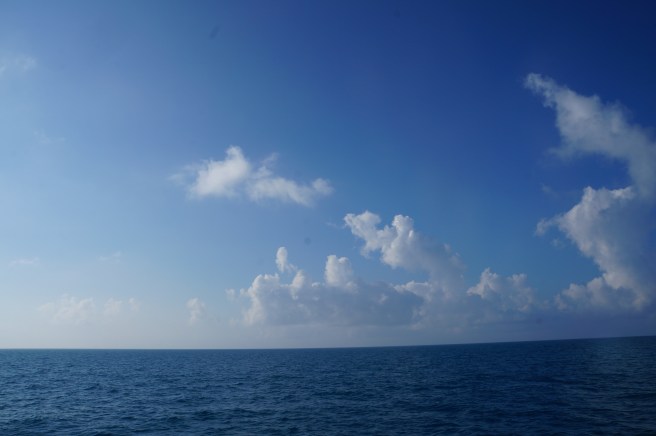 The bottom depth varies from ten to fifty feet on average. Water clarity is beautiful offering a view of the bottom almost the entire trip. Abundant sea life gave us glimpses of sea turtles and flying fish.
The bottom depth varies from ten to fifty feet on average. Water clarity is beautiful offering a view of the bottom almost the entire trip. Abundant sea life gave us glimpses of sea turtles and flying fish.
Two hours and fifteen minutes later we were alone with one hundred sixty-eight strangers on Garden Key, home to Fort Jefferson. We passed several atolls as we pulled around the island to the main dock. We were at the front of the line to depart the ship and made haste to get on land, pick a spot to set our belongings and explore the island.
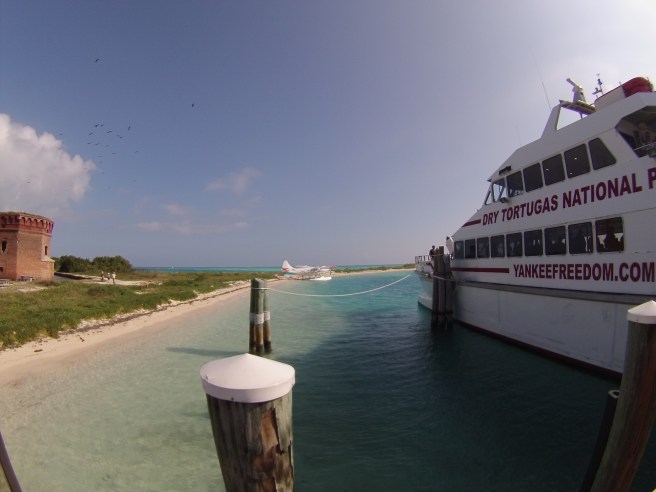
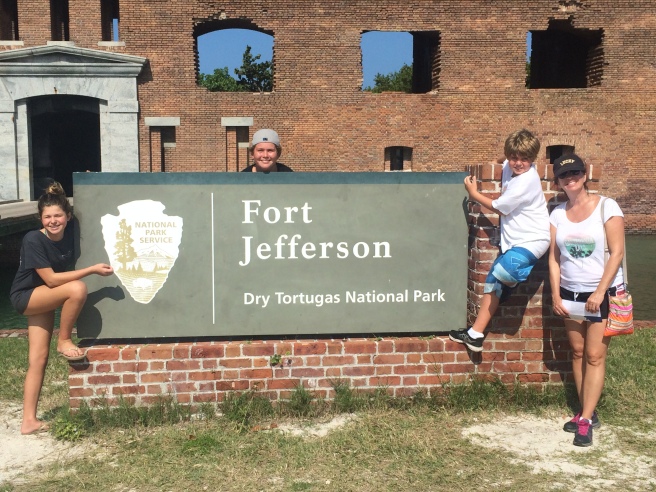
Fort Jefferson was built in between 1846 and 1875 to protect one of the most strategic deep water anchorages in North America. This provided an advance post for the United States to patrol the Gulf of Mexico and the Straits of Florida. Fort Jefferson was one of the largest forts ever built. Nearly thirty years to construct, using over thirty million bricks Fort Jefferson was never finished nor fully armed. Yet it was a link in a chain of coastal forts that stretched from main to California. During the Civil War, Union warships used the harbor in their campaign to blockade southern shipping. The fort was also used as a prison, mostly for Union deserters. Housing its most famous prisoner Dr. Samual Mudd, the physician who set the broken leg of John Wilkes Booth. Though used briefly in both world wars the fort was ultimately abandoned by the Army in 1874.
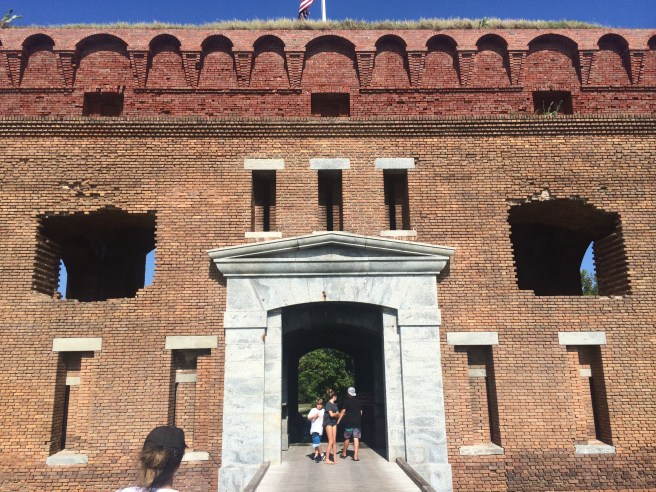
Today Fort Jefferson is protected by the National Parks and is currently undergoing preservation efforts. The park service is stabilizing and restoring the nineteenth century masonry structure for future generations to enjoy.
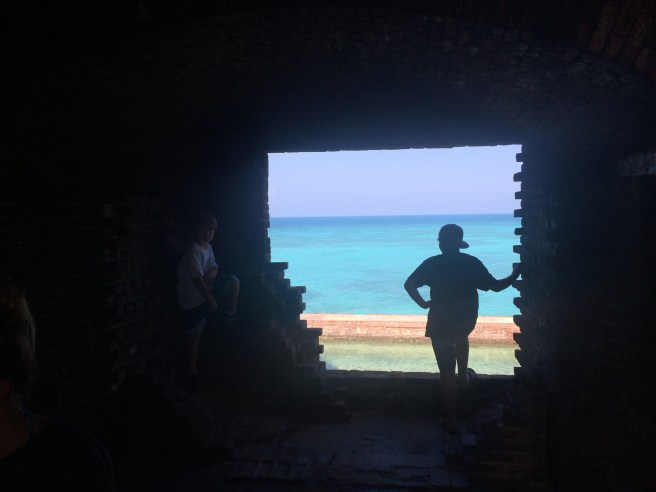

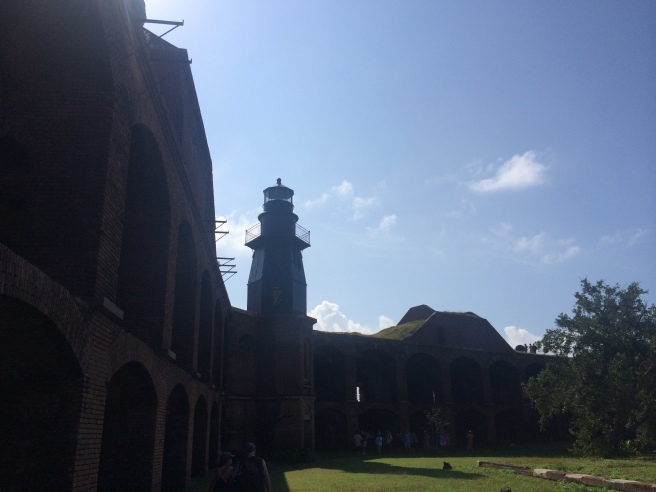
While the fort is the primary landmark here the real jewel is the location. The pristine waters here are within reach of the third largest barrier reef in the world. Warm and clear, it’s perfect for snorkeling and diving.
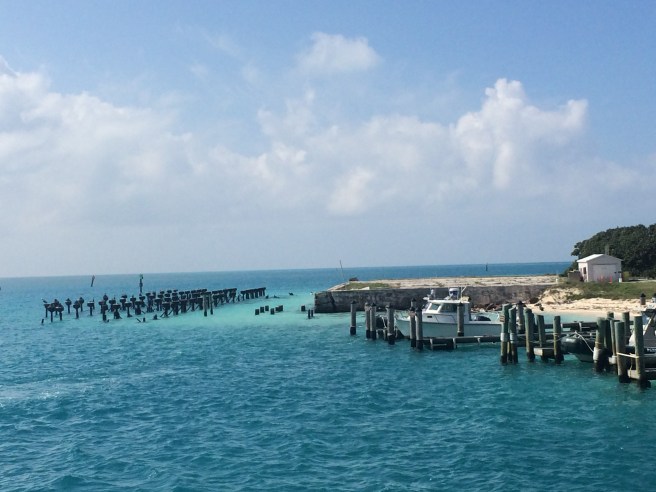
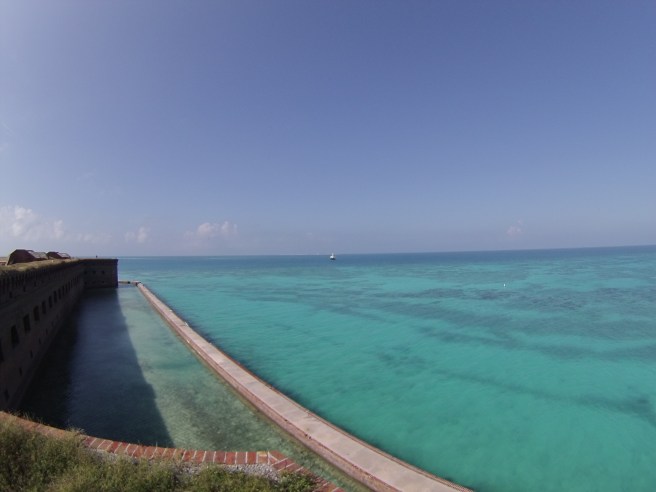
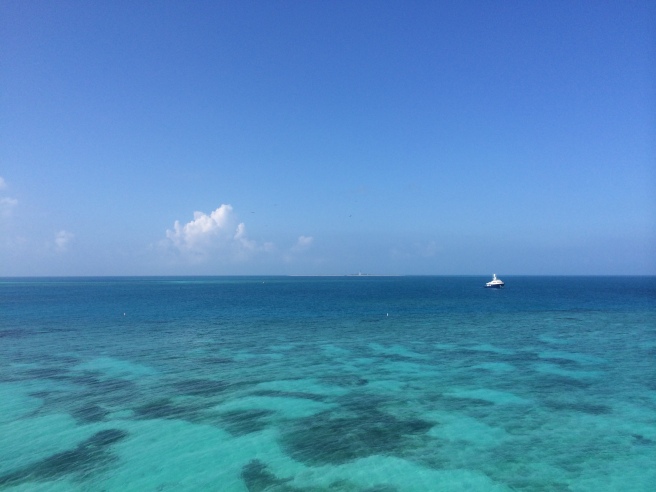
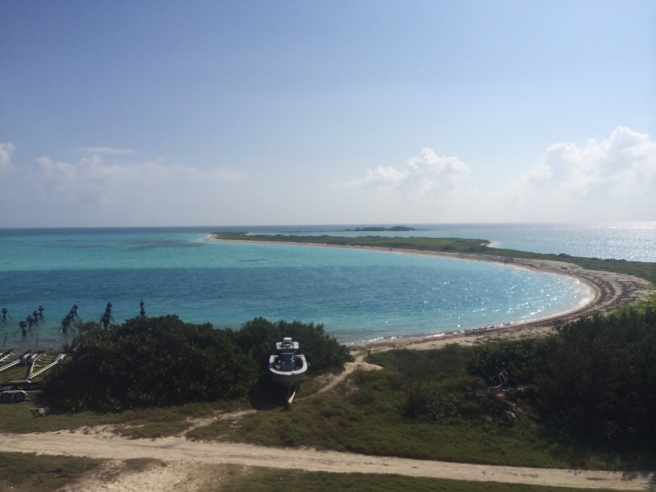
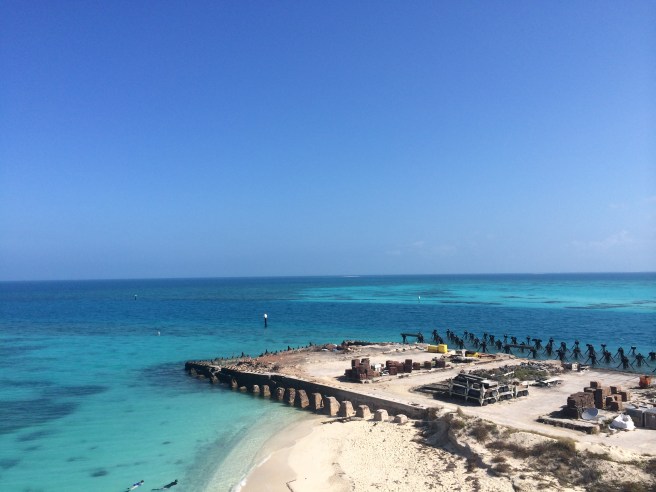
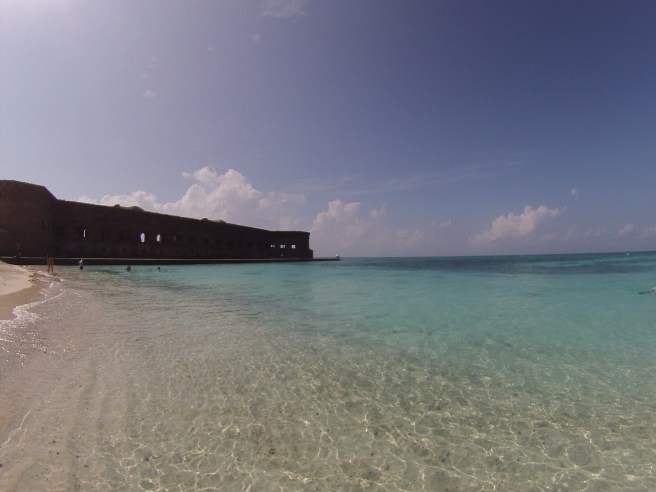
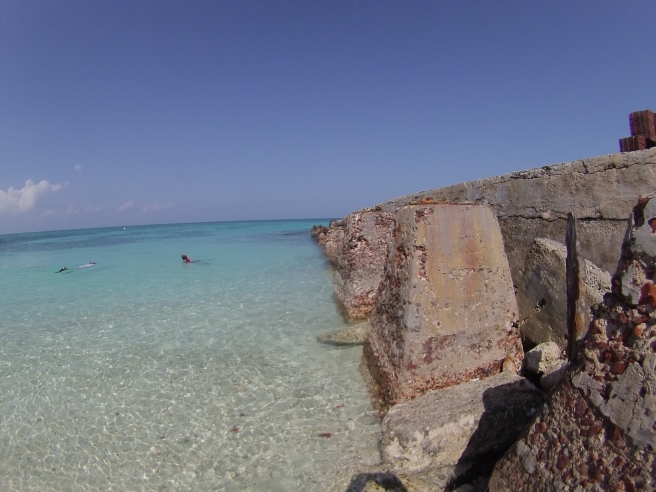
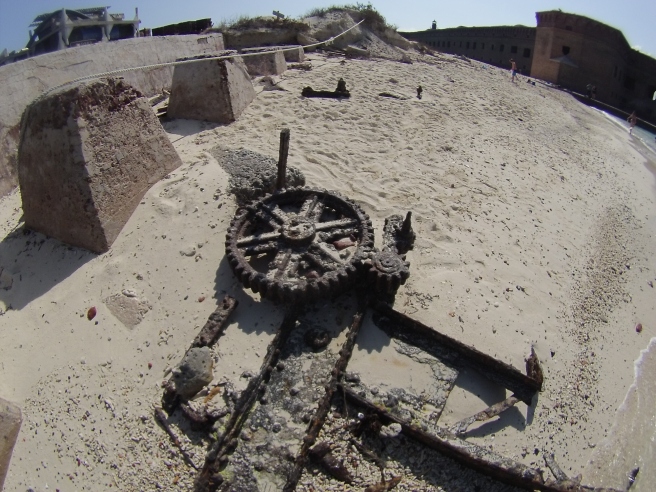
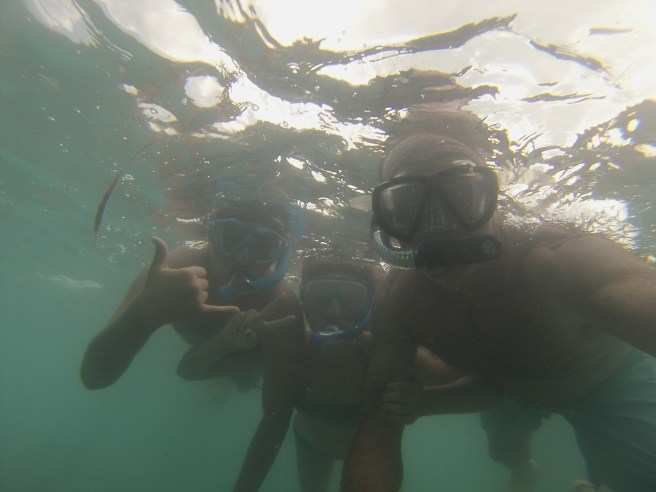
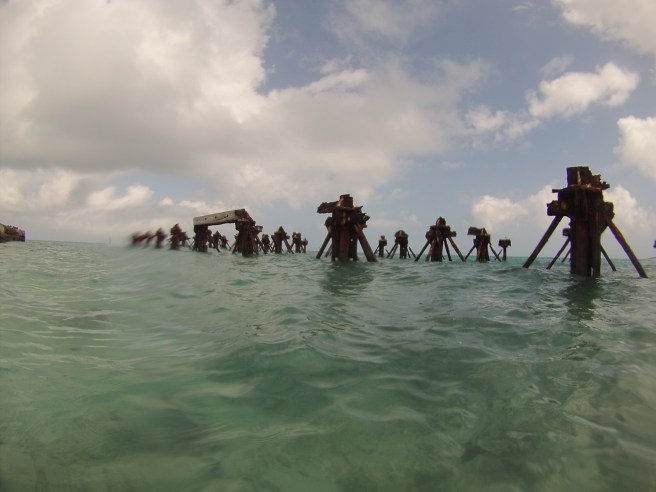
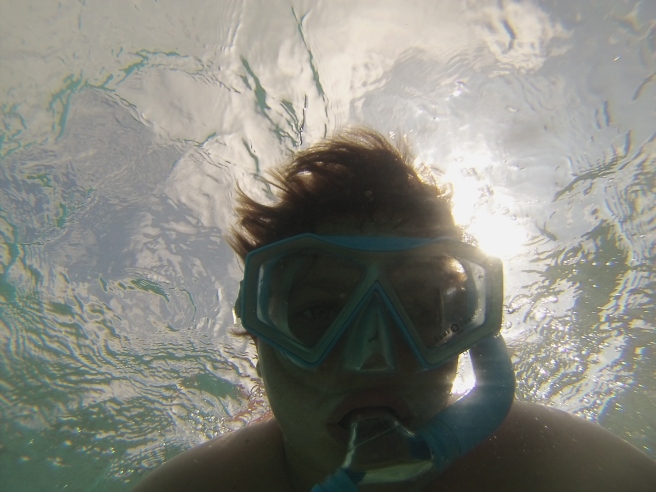
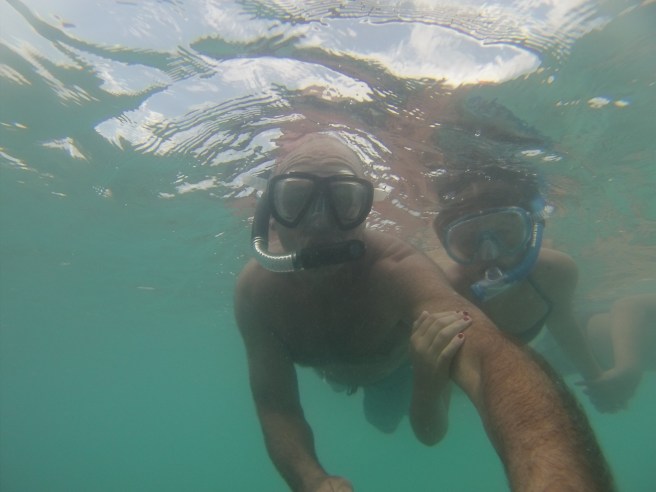
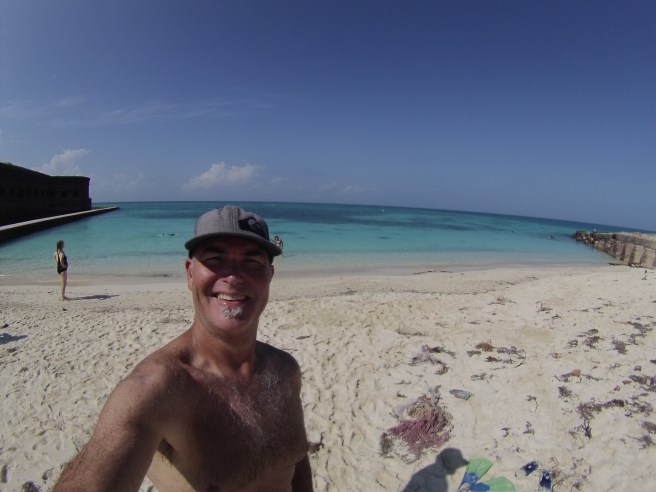
Our time here was too brief and we knew that like many other places we have visited, vowed to return.
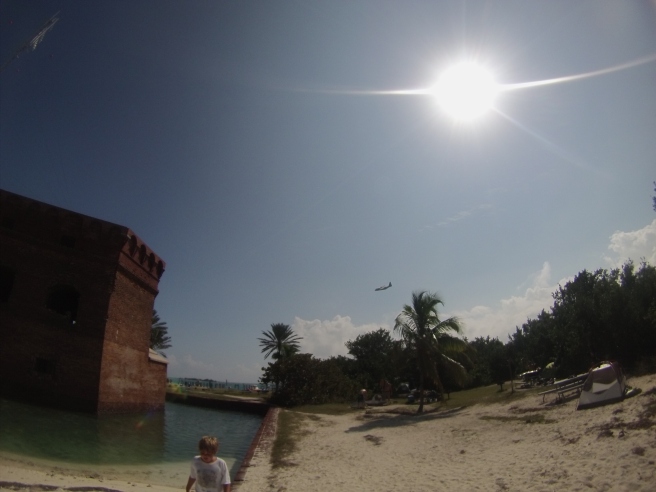
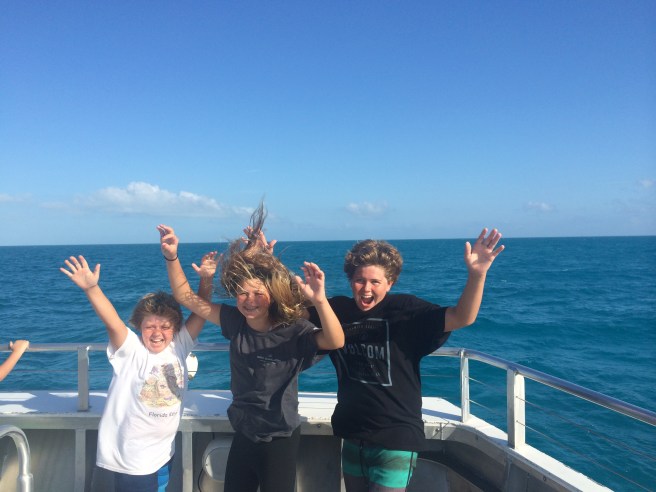
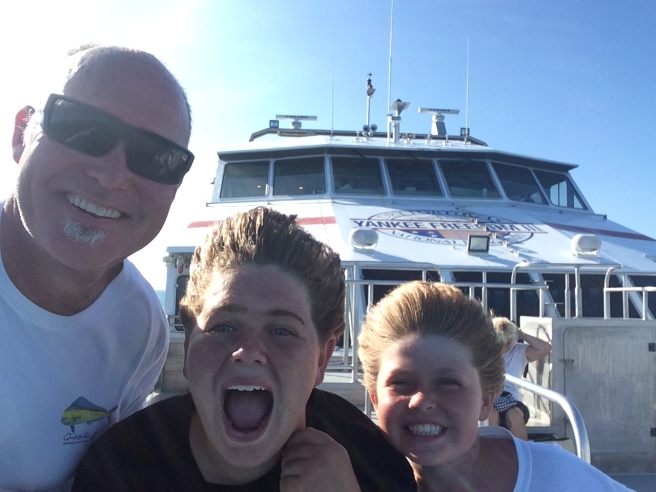
With some planning you are able camp on the island. You must pack in and pack out everything including food and water as this is a very remote and isolated location. In the event of an injury you are on your own. I spoke with a couple of people who had spent the night and they said, “when the ferry pulls away from the dock, that’s when you feel truly isolated”. There are a few park rangers who live on the island full time but you are on your own. Once everyone leaves the island it y becomes your own and the real bonus is the sky full of stars free from any light pollution. Camping overnight here remains on our bucket list.
We will join you when you are ready to camp out thete. Josie and I love that place . Love reading your adventure.
LikeLike
Great to meet you today at the hot springs in Ouray, CO! Hope to see your crew in Telluride tomorrow, and the kiddos in my class next year!! All my best, Rex
LikeLike